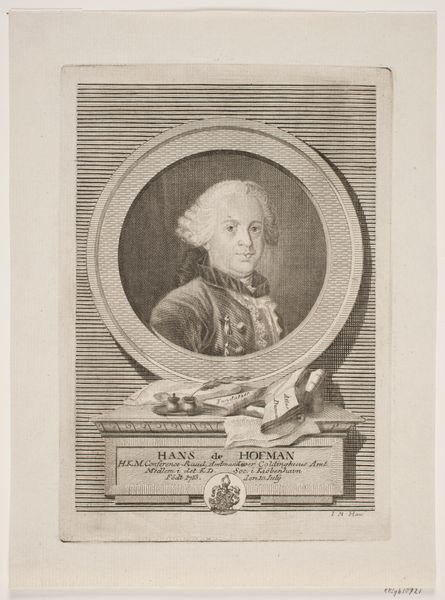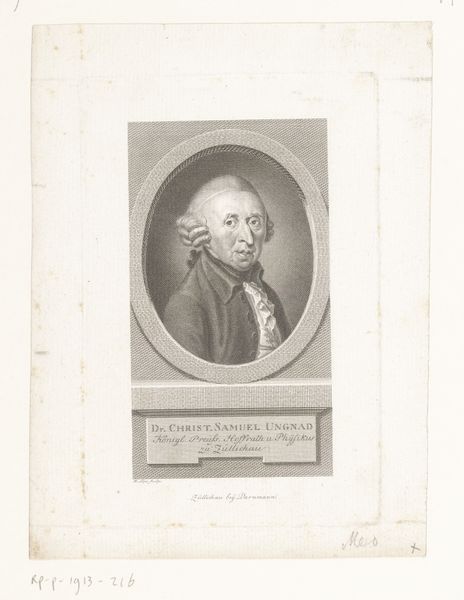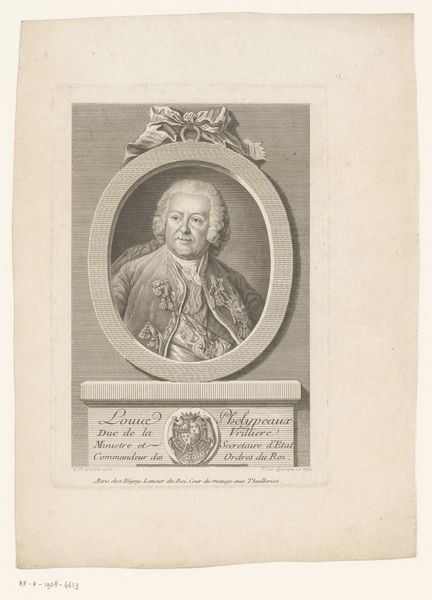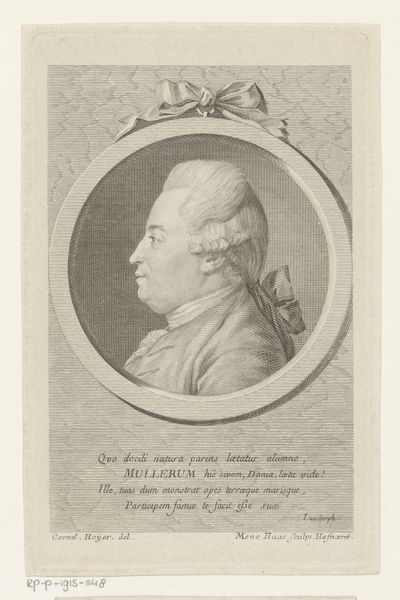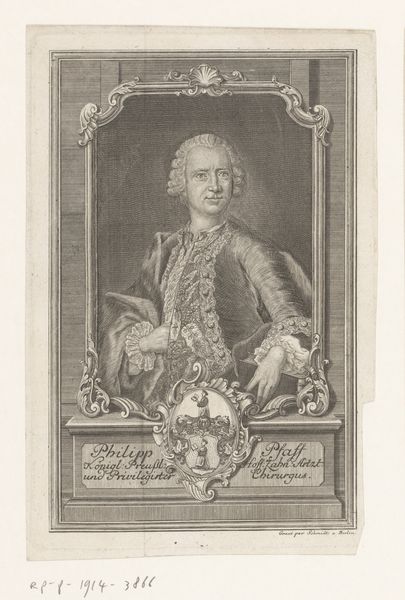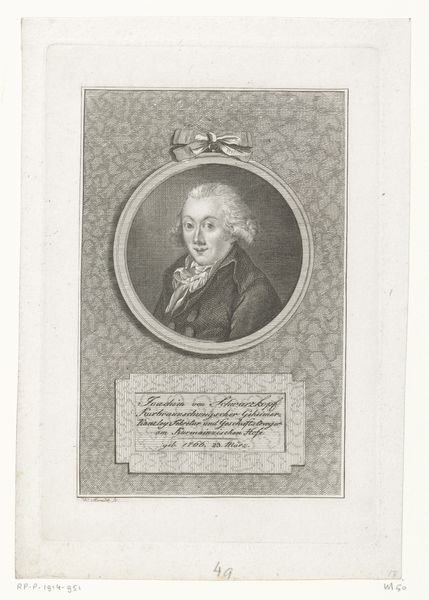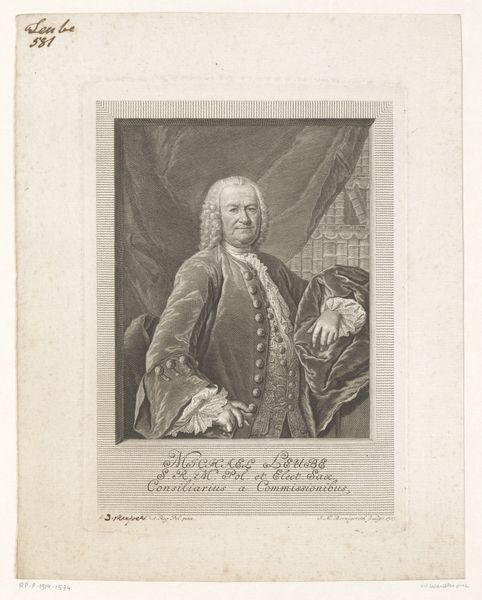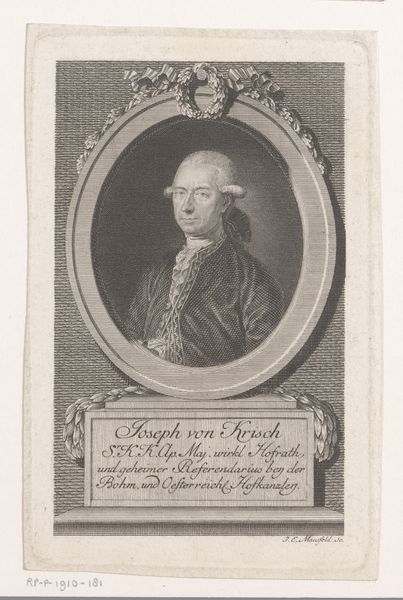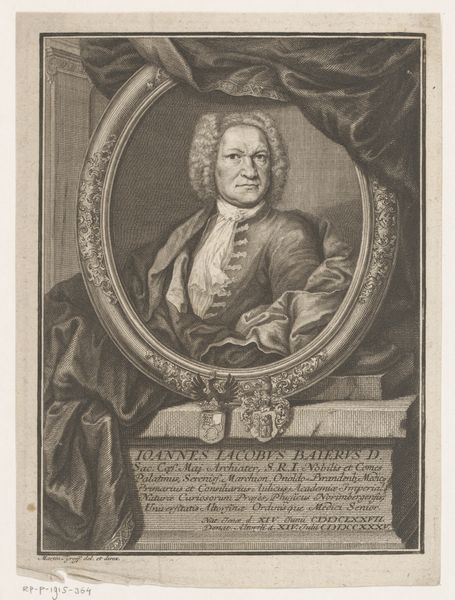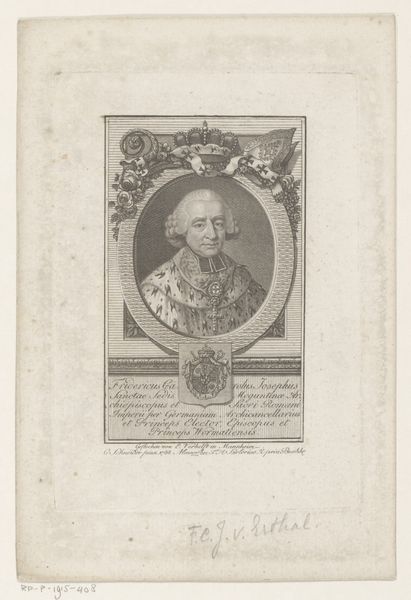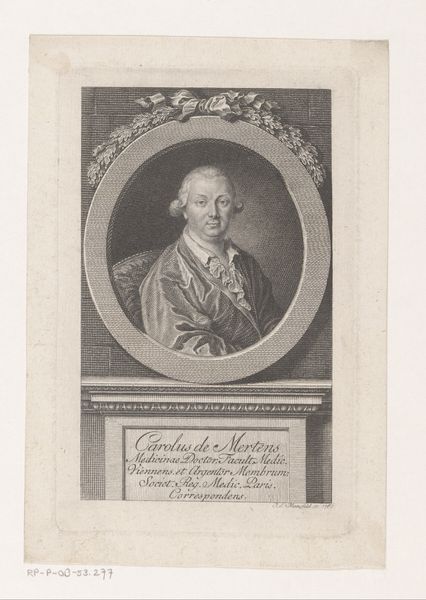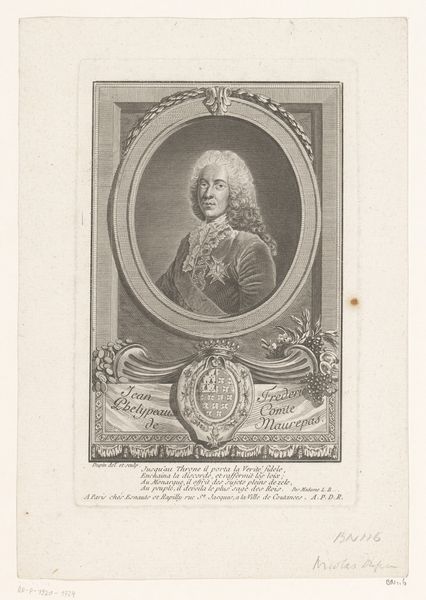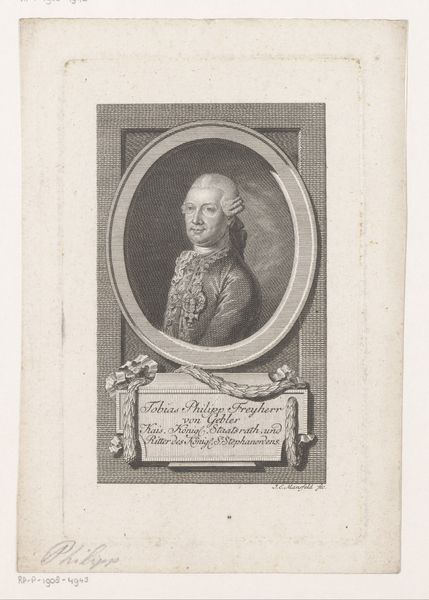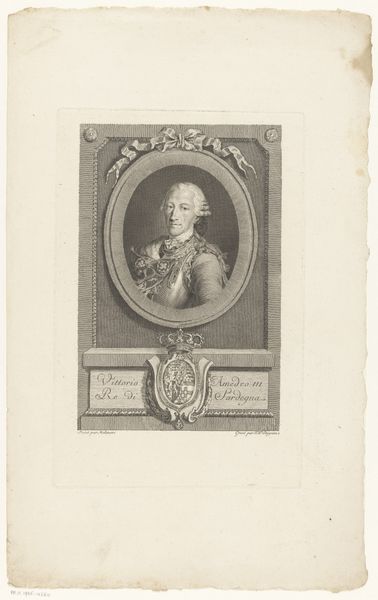
print, paper, engraving
#
portrait
#
neoclacissism
# print
#
old engraving style
#
paper
#
engraving
Dimensions: height 141 mm, width 96 mm
Copyright: Rijks Museum: Open Domain
Editor: This is a portrait of Jérôme de Lalande, created in 1774 by François Robert Ingouf. It's an engraving on paper, and it has an "old engraving style" to it. The detail is impressive, particularly considering the medium, but I’m curious about the social implications of creating and distributing such a work. What can you tell me? Curator: Considering this print, let's examine the labor and consumption involved in its creation. Engravings like this weren’t mass-produced like later printed materials, but they still represent a form of relatively accessible art. The material itself, paper, was becoming more widespread. Think about the labor of the engraver, Ingouf – he wasn't creating "high art" painting, but he was engaging in a skilled trade tied to both art and burgeoning industry. What social strata had access to it and why? Editor: So, unlike a painted portrait commissioned only by the wealthy, an engraving allowed for wider, yet probably still restricted, circulation of Lalande's image and ideas? Who had the means to own this type of image? Curator: Exactly. Think about who might purchase this: fellow scientists, members of academies, or individuals aspiring to connect with intellectual circles. This engraving facilitated a form of social networking, displaying an alignment with certain ideals and values. It's not just an image; it’s a commodity, imbued with cultural capital. Note the French poem. How might that effect who can purchase and read this engraving? Editor: It makes it seem exclusive, a club only those who speak the language can belong to. Thinking about it, this engraving is less about immortalizing Lalande and more about demonstrating the engraver's skill while connecting with a certain intellectual society, and trading on his prestige. Curator: Precisely. We’ve moved from seeing it as simply a portrait to understanding it as a cultural object deeply embedded in the material conditions of its time, in a network of production, distribution, and consumption that reflects and shapes social hierarchies. Editor: It makes you rethink how images work, how they circulate, and how they perform for those who own them. Thank you, this gives me a lot to think about!
Comments
No comments
Be the first to comment and join the conversation on the ultimate creative platform.
